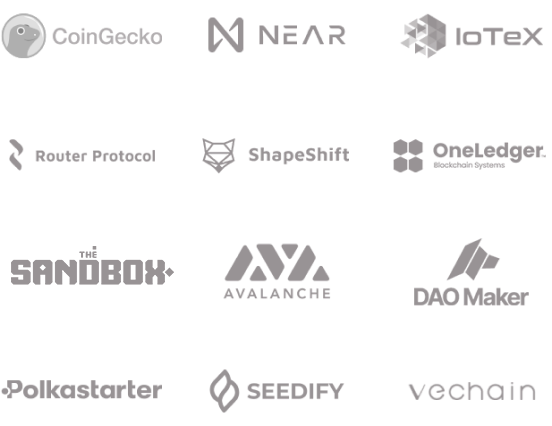Thank you for your request
Get security score on
1,200+ Audited Projects

🇺🇦 Hacken stands with Ukraine!
Learn more
Web application penetration testing is the technique to assess the vulnerability of web apps to malicious attacks. It simulates internal or external unauthorized attacks aimed at accessing sensitive data such as users’ information. The key objective of this process is to identify how cybercriminals or enemies can access corporate data from the Web, determine whether corporate email servers are adequately secured, and estimate the capacity of site and server hosted on the web to address security threats.
Web penetration testing team assesses the security of web apps developed in-house as well as products developed by third parties. The common security weaknesses attributable to web products are:
People use web applications for shopping, studying, communicating, and other purposes. These applications store huge volumes of data including private information. Protection of these data is one of the main responsibilities of projects.
Web application pentesting allows companies to identify whether unauthorized users can access their data. Data is the main corporate asset in modern business and, thus, by suffering from the compromise of their data companies can experience reputational as well as financial losses.
One of the main purposes of web application penetration testing is to estimate whether the security measures applied by companies are effective. Only independent assessment may allow companies to realize if they have the capacity to mitigate the most widespread forms of attacks. Within the framework of this form of security testing, specialists assess publicly exposed elements such as DNS, firewalls, routers, etc.
Web application penetration testing conducted regularly such as every year or on a quarterly basis allows companies to adhere to minimum requirements for data security compliance such as ISO, HIPAA, PCI DSS, etc.
There are 2 main types of web app pentesting including simulating inside (internal) or an outside attack (external). Internal web app pentesting is carried out within the entity requesting security testing via LAN encompassing also the assessment of the capacity of web products hosted on the intranet to address major security threats. The purpose of internal application penetration testing is to find flaws contained in the corporate firewall.
When conducting internal web penetration testing specialists use valid credentials to assess environment security and identify potential attack vectors. Common internal attacks that may be prevented by conducting regular internal application pen testing are:
Developers may falsely consider that most attacks have an external nature. However, the most disastrous hacks may occur from inside.
External web application penetration testing assesses the resistance of web products to outside attacks. The web app penetration testing specialists do not have any insights regarding security layers integrated by the client. The only information they have when simulating the external attack is the client’s system IP address. Security specialists look for data concerning the target host on public web pages. External web penetration testing encompasses testing the project’s servers, firewalls, and IDS.
Hacken methodology is following the “OWASP Testing Guide” and is built on logical flow. Hacken web app pen testing specialists consider OWASP Top 10 methodology.
Hacken web penetration testing methodology corresponds to industry best practices. The weaknesses missed by scanners are detected through manual testing.
When conducting web application pentesting Hacken security specialists assess web apps, custom scripts, and programs using man-in-the-middle proxies, web vulnerability scanners, and open-source utilities. This process consists of three phases:
Finding data regarding the app or site in question without any special admissions. Hacken experts look for such information as details about the product, architecture and technology in use, network settings, staff and their duties and admissions within the app management structure and logins, authentication formats, and passwords.
Hacken specialists apply such techniques as protocol fingerprinting, banner grabbing, and manual communication with the service. Thereby they are enumerating ports and services to identify any active application protocols and soft vendors and versions supporting the product.
Hacken team also searches for unknown flaws by detecting specific elements of the infrastructure such as Intrusion Detection / Prevention Systems (IDPs), separate web/application servers, DNS load balancing, Web Application Firewalls (WAFs), and reverse proxies.
All found ports, web products, and services are reviewed by our specialists. Then a map of services available on the systems is developed. Hacken specialists estimate the scope of security flaws from both authenticated and unauthenticated points of view. Our experts use special testing instruments and access the account of a valid test user.
At this phase of web application penetration testing our experts conduct a security review of:
Risk-free exploitation of found weaknesses. The purpose of this step is to determine potential damage an entity can experience due to a real-life attack. At this phase, our experts may also find additional access.
OWASP Top 10 is a standard awareness document that is used by web application penetration testing team. The document constitutes a broad consensus on severe flaws or bugs that may be found in web apps and resulting in the compromise of security. Businesses that prioritize securing their users have to minimize the risks specified in this document.
OWASP Top 10 list serves as a foundation for companies when specifying their own “top 10” lists. By following OWASP Top 10 list web application penetration testing specialists deliver high-quality results to clients.
During web application penetration testing, the main focus of Hacken specialists is made on looking for vulnerabilities specified in the OWASP Top 10 List.
However, considering the specifications of web products under test, Hacken web app pen testing specialists can look for XML external entities, cross-site scripting, insecure deserialization, encapsulation, failure to limit URL access, and other issues.
Hacken employs leading web application security experts whose professionalism is proven by industry-recognized certifications. Hacken security specialists have the following certificates:




